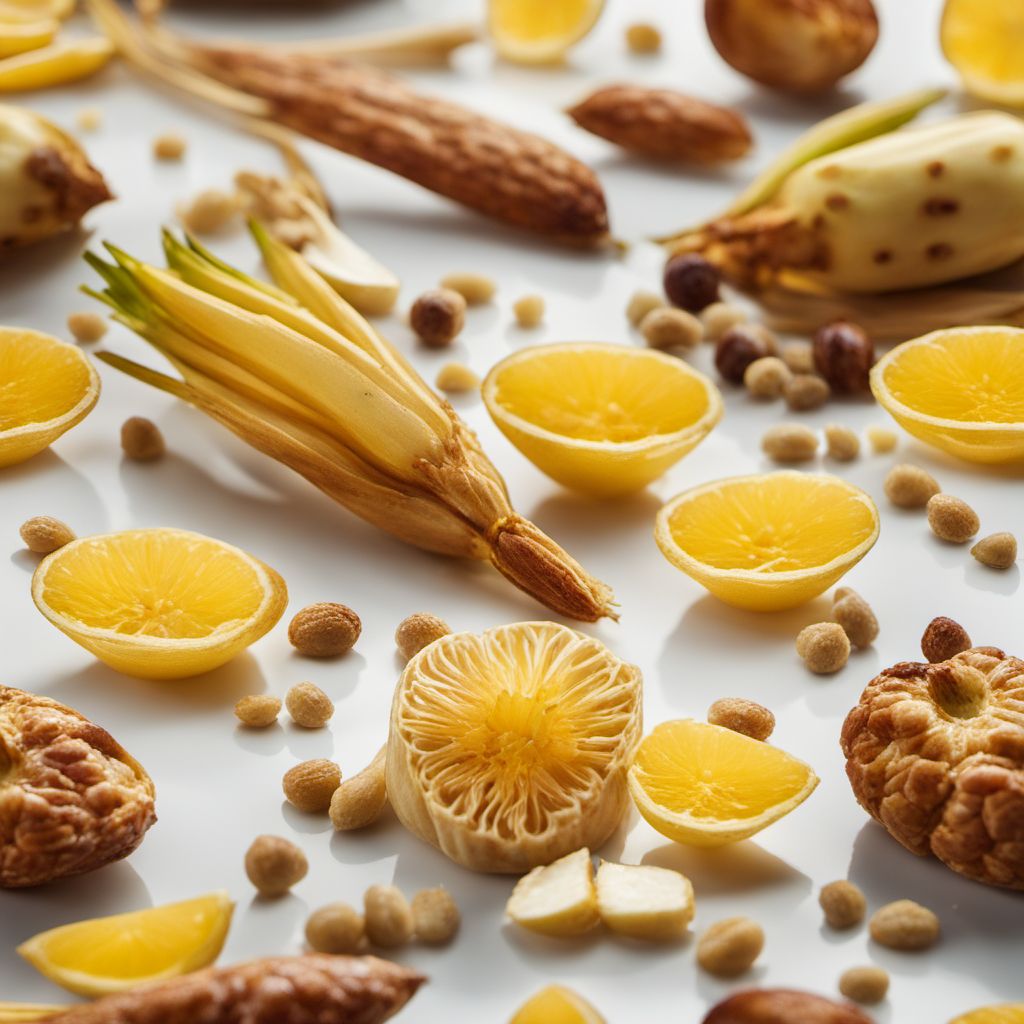
Ingredient
Salsifies and similar-
The Hidden Gems of the Root Vegetable Family
Salsifies and similar vegetables, including scorzonera and black salsify, belong to the sunflower family and are characterized by their long, slender roots. They have a dark brown or black skin that needs to be peeled before use, revealing a creamy white flesh. Salsifies have a delicate, earthy flavor with hints of artichoke and oyster, while scorzonera has a slightly bitter taste. These vegetables have a fibrous texture that becomes tender when cooked, making them versatile for various culinary applications.
Origins and history
Salsifies and similar vegetables have a long history dating back to ancient Greece and Rome, where they were highly regarded for their medicinal properties. They were later introduced to Europe during the Middle Ages and gained popularity as a staple food during times of scarcity. Today, they are cultivated in various regions around the world, including Europe, North America, and Asia.
Nutritional information
Salsifies and similar vegetables are low in calories and rich in dietary fiber, providing essential nutrients such as potassium, vitamin C, and iron.
Allergens
There are no known allergens associated with salsifies and similar vegetables.
How to select
When selecting salsifies and similar vegetables, look for roots that are firm, smooth, and free from blemishes or soft spots. Choose smaller roots, as they tend to be more tender and flavorful. Avoid any roots that appear shriveled or have moldy patches.
Storage recommendations
To maintain freshness, store salsifies and similar vegetables in a cool, dark place, such as the refrigerator's crisper drawer. They can be kept for up to two weeks when stored properly.
How to produce
Salsifies and similar vegetables can be grown in home gardens by sowing seeds directly into well-drained soil. They prefer cool climates and require regular watering to ensure proper root development.
Preparation tips
Before cooking, peel the skin of salsifies and similar vegetables using a vegetable peeler or paring knife. To prevent discoloration, immediately place the peeled roots in a bowl of water with a squeeze of lemon juice. Salsifies can be boiled, roasted, or sautéed, while scorzonera is often boiled or steamed. They can be used in soups, stews, gratins, or simply enjoyed as a side dish.
Culinary uses
Salsifies and similar vegetables are versatile ingredients that can be used in a variety of dishes. They add depth of flavor to soups and stews, and their creamy texture makes them suitable for gratins and purees. They can also be roasted or sautéed as a side dish or incorporated into salads for added crunch.
Availability
Salsifies and similar vegetables are commonly available in Europe, particularly in countries like France, Belgium, and the Netherlands. They can also be found in specialty grocery stores or farmers markets in North America and some parts of Asia.
More ingredients from this category

Scorzonera
The Hidden Gem Root

Burdock, greater or edible
The Mighty Root: Unveiling the Culinary Wonders of Burdock

Rampion roots
Rediscovering Rampion Roots

Skirrets
The Forgotten Root: Unveiling the Delights of Skirrets

Spanish salsifies
The Hidden Gem of Root Vegetables

Salsifies
The Hidden Gem of Root Vegetables: Unveiling the Delights of Salsifies